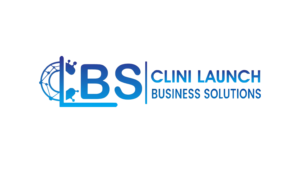
Healthcare is the process to diagnose, treat illness, and prevention from injuries and other physical and mental impairments. Talent acquisition in healthcare stands as a critical bridge to facilitate and bring thriving healthcare professionals to the organizations. Healthcare recruiters are tasked with an in-demand yet rewarding mission of directing these professionals into the designated roles.
In a decade, we have witnessed a paradigm shift in hiring practices and talent acquisition in healthcare while facing unique challenges and opportunities. In this blog post, we will cover recruitment trends, workforce planning, diversity & inclusion in hiring, and employer branding.
Healthcare Recruiting Trends
As the healthcare industry is unique for its clinical and non-clinical operations, healthcare professionals are required to provide care for patients and run the business side of healthcare. As a result, the healthcare recruiting trends are especially challenging due to diverse factors. Some of the factors include talent shortages, high employee turnover rates, and the competitive nature of job seekers in the healthcare market.
According to Jobvite, nearly 83% of clinical and 77% of non-clinical employees are open to other job opportunities in the healthcare sector. The healthcare industry faces challenges in the recruitment and retention due to shortage of skilled professionals, high turnover rates, and a competitive job market.
However, the US Bureau of Labor Statistics projected that healthcare employment will grow from 2022 to 2032 with approximately 1.8 million job openings each year. In the context of the American Association of Colleges of Nursing, approximately 30,000 new APRNs (Advanced Practice Registered Nurses) will be required each year to meet the rising demand of healthcare professionals. This may add pressure on healthcare recruiters to not only hire top talent, but also retain existing employees.
As the need is growing each year for healthcare talent acquisition, the employers can no longer rely on reactive hiring. In 2025, organizations must shift to strategic talent acquisition in healthcare to attract and retain top-notch talent with employee value proposition (EVP). It does mean transformation of employer branding, retention efforts, and recruitment marketing in one roof that will inspire both current staff and future talent.
Artificial Intelligence and Automation
Artificial Intelligence is automating tasks while improving efficiency with Applicant Tracking System that can analyze resumes, identify key skills and rank candidates based on job requirements. This streamlines that screening process and allows recruiters to focus on the most promising applicants. Furthermore, AI can schedule interviews and source candidates from various online platforms, and even predict candidate success.
However, it is crucial to use artificial intelligence responsibly. Ensuring data privacy, mitigating algorithmic bias, and maintaining human oversight are essential to ensure a fair and ethical recruitment process. By leveraging AI’s potential while addressing these concerns, companies can improve the hiring quality, candidate’s experience enhancement, and build a more diverse and inclusive workforce.
Remote and Hybrid Work
With the increase in remote and hybrid working models, driven by factors such as technological advancements, employee preference for flexibility, and the need to improve access to care. Telehealth, remote patient monitoring, and virtual consultations have expanded the scope of remote healthcare services. This shift necessitates a corresponding evolution in recruitment strategies. Healthcare organizations must adapt their hiring processes to attract and retain top talent from a broader geographical pool, focusing on skills, experience and cultural fit rather than solely on location.
Remote hiring presents both challenges and benefits. Challenges include ensuring compliance with relevant regulations. However, remote work also offers significant advantages, such as access to a larger talent pool, increased employee satisfaction and retention, and reduced overhead costs. With the careful consideration, implementing appropriate technologies, and support systems, healthcare organizations can successfully navigate the evolving landscape of remote work and build high-performing, distributed teams.
Candidate Experience
A positive candidate’s experience is crucial for attracting and retaining top talent. It goes beyond simply filling a vacancy, it is about building a strong employer brand while fostering long-term relationships with potential employees. When candidates feel valued and respected throughout the hiring process, they are more likely to accept job offers, become engaged employees, and become brand ambassadors for the company. This can significantly impact a company’s reputation and ability to attract future talent.
With the improvement in candidate’s communication and engagement, companies can implement several strategies. This may include timely and transparent communication throughout the hiring process, providing regular updates on the status of their application, and promptly addressing any questions or concerns. Utilizing technology
These include timely and transparent communication throughout the hiring process, providing regular updates on the status of their application, and promptly addressing any questions or concerns. Utilizing technology such as AI-powered chatbots and automated scheduling tools can streamline communication and improve efficiency. Personalizing the experience by addressing candidates by name and tailoring communication to their specific interests can also enhance engagement. By prioritizing a positive candidate experience, companies can build stronger relationships with potential employees and gain a competitive advantage in the talent market.
Healthcare Workforce Planning
In the context of a workforce, the Association of American Medical Colleges conducted a study estimating that the U.S. will face a shortage of approximately 104,900 physicians by 2030. As it is a typical challenge in the healthcare sector as it is growing, there is a shortage of essential clinical and non-clinical staff across the country.
Anticipating Future Needs
Analyzing workforce trends and predicting future staffing needs is crucial for any organization’s success. By understanding the evolving skills landscape, demographic shifts, and technological advancements, businesses can proactively address potential challenges and capitalize on emerging opportunities. This proactive approach allows for strategic workforce planning, ensuring the right talent is available at the right time to support business growth and achieve strategic objectives.
Workforce analytics plays a vital role in this process. By collecting and analyzing data on employee demographics, skills, performance, and other relevant factors, organizations can gain valuable insights into their current workforce. These insights can be used to identify potential skill gaps, predict future staffing needs, and develop targeted strategies for recruitment, training, and development. Data-driven insights enable organizations to make informed decisions about their workforce, optimize resource allocation, and improve overall business performance.
Developing a Strong Talent Pipeline
Building a strong talent pipeline requires a proactive approach. Key strategies include offering internships to provide hands-on experience and attract top talent, fostering university partnerships to connect with potential graduates and conduct early talent assessments, and implementing employee referral programs to leverage employee networks and tap into hidden talent pools.
These initiatives not only attract qualified candidates but also enhance employer branding and foster long-term relationships within the talent community.
Succession Planning
Building a strong talent pipeline requires a proactive approach. Key strategies include offering internships to provide hands-on experience and attract top talent, fostering university partnerships to connect with potential graduates and conduct early talent assessments, and implementing employee referral programs to leverage employee networks and tap into hidden talent pools.
These initiatives not only attract qualified candidates but also enhance employer branding and foster long-term relationships within the talent community.
Diversity and Inclusion in Healthcare Hiring
Diversity and inclusion in healthcare hiring encompass the representation of individuals from various backgrounds. This includes race, ethnicity, gender, sexual orientation, and socioeconomic status. A diverse healthcare workforce offers significant benefits, including improved patient care.
Studies demonstrate that hospitals with diverse staff are better equipped to understand and address the unique needs of patients from various backgrounds. This leads to enhanced communication, trust, and overall care quality. Beyond improving patient care, diversity contributes to organizational success.
Research from McKinsey & Company indicates that companies with diverse workforces are 35% more likely to outperform their peers. Additionally, diverse medical practices experience higher employee retention rates, with inclusive workplaces being 60% more likely to retain employees. This strong retention is crucial for ensuring stability and continuity of care within healthcare organizations.
Building a Diverse Workforce
Creating a diverse and inclusive workforce is paramount in healthcare. A diverse team brings together individuals with different backgrounds, experiences, and perspectives, leading to a richer understanding of patient needs and improved communication. When the healthcare workforce reflects the diversity of the patient population, it fosters trust, enhances cultural competency, and improves access to care for underserved communities.
Beyond patient care, diversity fuels innovation within healthcare organizations. Diverse teams are more likely to generate creative solutions to complex challenges, improve problem-solving, and drive advancements in medical research and treatment. Embracing diversity and inclusion fosters a more equitable and just healthcare system, where everyone has the opportunity to receive the highest quality care, regardless of their background.
Eliminating Bias
Blind resume reviews, where names, addresses, and other potentially identifying information are removed, help mitigate bias based on gender, race, or ethnicity. This allows recruiters to focus solely on a candidate’s skills and experience. Additionally, structured interviews, where all candidates are asked the same set of predetermined questions, ensure consistency and fairness in the evaluation process. This minimizes the impact of personal biases and preferences that can creep into unstructured conversations.
By implementing these strategies and fostering a culture of inclusivity, organizations can create a more equitable hiring process and build a diverse and talented workforce.
Creating an Inclusive Workplace
Creating an inclusive workplace is paramount for fostering a positive and productive environment for all employees. An inclusive culture values and respects the unique perspectives, backgrounds, and experiences of every individual. This involves actively promoting diversity and inclusion initiatives, such as unconscious bias training, employee resource groups, and inclusive hiring practices. By fostering a sense of belonging and ensuring that all employees feel valued and respected, companies can unlock the full potential of their workforce, drive innovation, and enhance their overall success.
Furthermore, an inclusive workplace benefits everyone. It leads to increased employee engagement, improved morale, and reduced turnover. By creating a culture where everyone feels comfortable being their authentic selves, companies can attract and retain top talent, build stronger teams, and gain a competitive advantage in the marketplace.
Healthcare Employer Branding
The healthcare industry is poised for substantial growth, with an anticipated 2.6 million new jobs by 2030. While this presents exciting opportunities, challenges loom. Registered nurse demand is projected to rise 9%, slightly outpacing the average for all occupations. However, a concerning 34% of nurses intend to leave their current positions. To navigate this landscape, healthcare companies must refine their recruitment strategies. A critical initial step involves a comprehensive review and revitalization of their employer brand. It’s crucial to acknowledge that this brand is not solely defined by company messaging, but also by external perceptions and the collective experiences of employees.
Building a Strong Employer Brand
In the highly competitive healthcare landscape, building a strong employer brand is paramount for attracting and retaining top talent. A compelling employer brand differentiates a healthcare organization from its competitors, showcasing its unique value proposition to potential employees. Key elements include a clearly defined mission and values that resonate with purpose-driven individuals, a commitment to employee well-being and professional development, and a positive and inclusive workplace culture.
Effectively communicating this brand requires authentic storytelling through employee testimonials, social media campaigns, and engaging content that highlights the unique experiences and rewards of working at the organization. By cultivating a strong employer brand, healthcare organizations can attract the most talented professionals, foster a high-performing workforce, and ultimately deliver the highest quality patient care.
Leveraging Social Media
Employee Advocacy
Social media has become an indispensable tool for employer branding and attracting top talent. Platforms like LinkedIn, Twitter, Instagram, and Facebook allow companies to showcase their company culture, values, and employee experiences to a wider audience. By sharing engaging content, such as employee testimonials, behind-the-scenes glimpses, and company news, businesses can build a positive online reputation and attract potential candidates who align with their brand.
Furthermore, social media enables direct interaction with potential candidates. Companies can respond to inquiries, answer questions, and build relationships with individuals interested in their open positions. Targeted advertising campaigns on platforms like LinkedIn can help reach specific demographics and attract passive job seekers who may not be actively searching for new opportunities. By effectively utilizing social media, companies can enhance their employer brand, attract top talent, and gain a competitive advantage in the job market.
Employee Advocacy
Employee advocacy empowers employees to become brand ambassadors, sharing their positive experiences and promoting the organization as a great place to work within their own networks. This organic, authentic approach boosts employer branding, attracts top talent, and strengthens the company’s reputation. By providing employees with the tools, resources, and incentives to share company news, highlight positive workplace culture, and engage with potential candidates, organizations can leverage the power of their employees to build a strong and thriving talent pipeline.
Conclusion
Effective talent acquisition strategies are crucial for healthcare organizations to attract and retain top talent in a competitive market. Key takeaways include leveraging technology like AI for efficient screening and personalized candidate experiences. Building a strong talent pipeline through internships, university partnerships, and employee referral programs is essential for long-term success. By implementing these strategies, healthcare organizations can ensure they have access to a skilled workforce, improve patient care, and maintain a competitive edge in a rapidly evolving industry. Healthcare organizations should prioritize investing in their talent acquisition efforts to build a high-performing and engaged workforce that can meet the evolving needs of the healthcare system. For more info, connect with us at www.clinilaunchbs.com.

